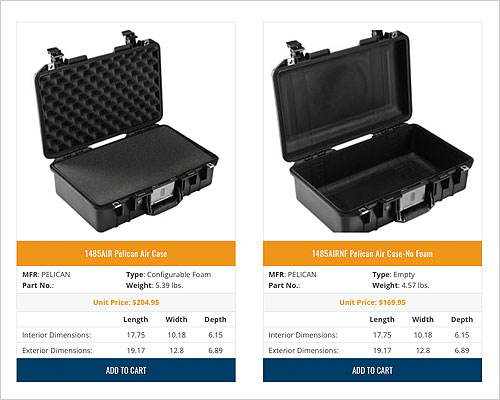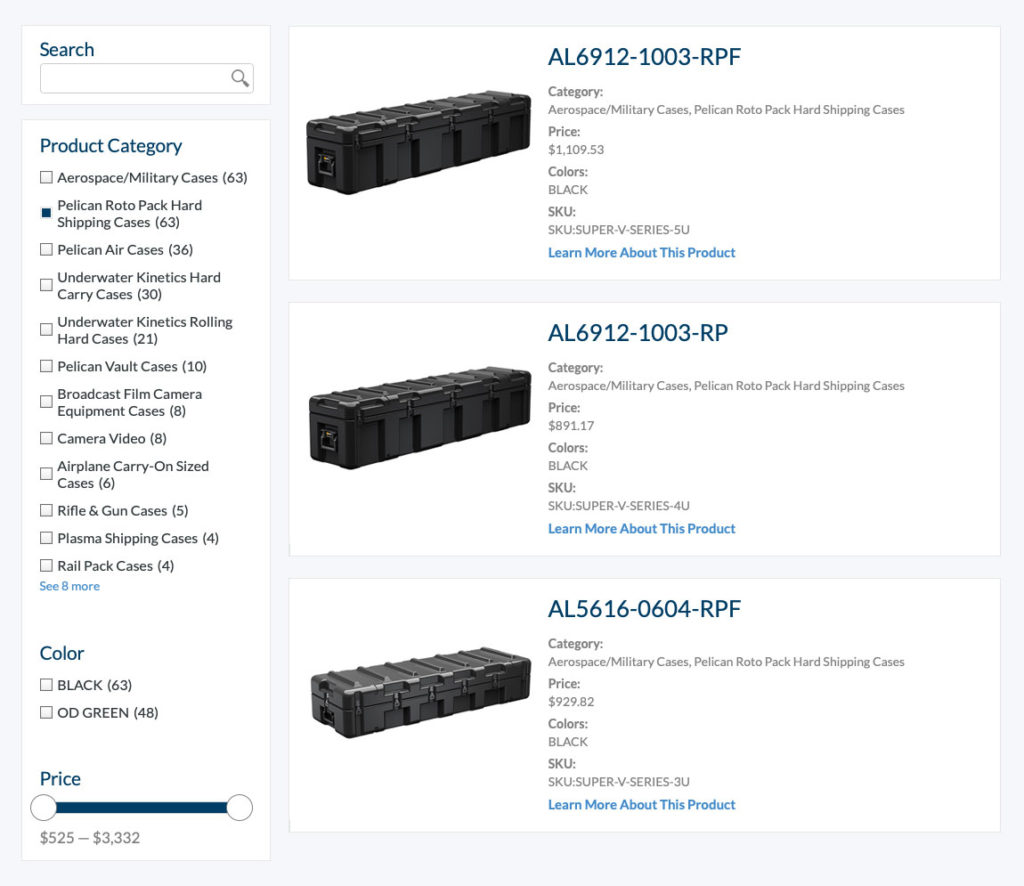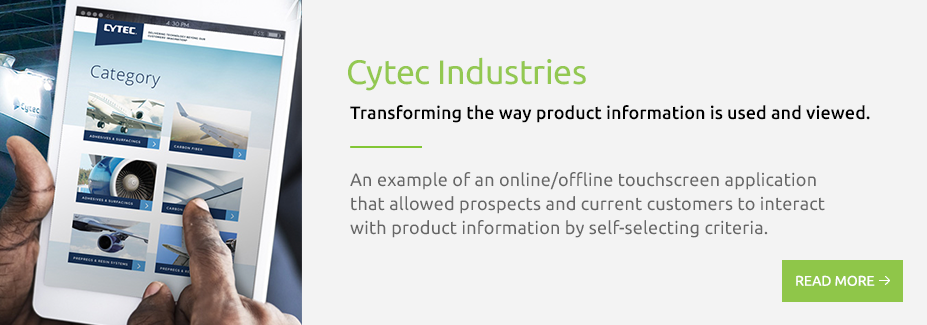November 7, 2022 / Marjoram
With few exceptions, printed B2B product catalogs have gone the way of the rotary phone and floppy disk — all relics of the past.
The product catalog is just one of many B2B industrial and ingredient brand marketing elements that must make the digital shift. When industrial companies are in the early stages of adopting a digital marketing strategy, customer experience must be a top priority for their evolution.
One Foot In, One Foot Out
Most B2B industrial and ingredient brands find themselves with one foot in the past and one in the digital age when it comes to their product catalogs. They’ve adopted a semblance of a digital strategy by using e-commerce or inventory management systems to promote their products. Or worse, they’re using clunky PDF brochures to showcase their offerings.
Neither method serves their customers well. The first overwhelms prospects with sales and product links prompting them to “Request a Quote” or “Buy Now.” The second brings prospects to the dynamic experience of the brand’s website, only to throw them into a static—and often outdated—PDF they must download to access.
Hidden behind the way industrial and ingredient brands display their product guides, however, is a deeper conflict: these brands are stuck in a tug-of-war between a transactional and a consultative product marketing model.
Transactional Sales: A Commodity-Centric Product Marketing Model
Transactional selling is a sales strategy focused solely on making a quick sale or transaction, with no emphasis on understanding the customer’s pain points or how certain products might solve that pain. Transactional selling appeals to price-motivated buyers but doesn’t cultivate a long-term relationship with them. Transactional industrial brands market their products as commodities, focusing on price and volume. Their product catalogs—in whatever form they take—are long lists of products, specifications, and price points.
Consultative Sales: A Customer-Centric Product Marketing Model
Sometimes called needs-based selling, a consultative sales approach positions a brand as strategic instead of transactional. Instead of simply pushing products, their website recommends various solutions to prospects by first understanding their needs and pain points. Industrial and ingredient brands with a consultative product marketing model are more customer-centric, concerned with digging into their customers’ problems to determine how their products can offer answers to these problems.
Whichever selling approach a brand adopts drives its product marketing strategy. They must decide on one or the other, though, because companies that try to do both end up doing neither well. The resulting disjointed customer experience leads to confusion and dilutes the larger brand strategy. By trying to do it all, the brand misses the opportunity to compel customers to learn more or purchase.
Which Approach Is Right for You?
Your product catalog is the menu that reflects which type of dining experience your brand offers to potential customers. Your approach depends on your business model. We look at it this way: Purely sales-oriented B2B websites offer your customers a fast-food experience. Which is fine if you rely on a systematized, lowest cost, commoditized approach to your product marketing. But if you know your solutions are worthy of a Michelin star or James Beard-level recognition, you would be better served by presenting them in more of a fine dining experience.

Modernize Your B2B Product Catalog Around Your Prospect Experience
The majority of B2B buyers prefer to order (and reorder) through self-serve digital channels. Your prospects are increasingly composed of younger generations who research every decision they make before they even contact you.
Returning to the restaurant analogy, these customers are going to peruse your menu before deciding if they’ll sit at the table and speak with a server. They’re in research mode, looking to solve a problem. Presenting your product information in a solution-focused, self-directed manner meets your prospective customers where they are and educates them according to their specific needs.
For example, suppose a buyer is searching for a fertilizer product for their commercial farming operation. Simply presenting a product grid that lists fertilizer after fertilizer with only technical specifications and price points is overwhelming and in no way consultative.
On the other hand, if the product catalog offered a more advanced, self-directed search functionality, prospects could begin to narrow the list of offerings relevant to their specific needs. The ability to filter fertilizer listings by “conflict-free” or “GMO-free” shifts the conversation to one of solutions rather than just products. Further refining fertilizer searches by region, crop, or soil type empowers the prospects to find exactly what they’re looking for, and quickly.
5 steps to Modernize Your B2B Website’s Product Catalog
So, how do you create a consultative product catalog experience for your customers? Here are five steps to get started:
1. Know Who You Are Talking To
A consultative product catalog is not a generic product document. It addresses the specific challenges your buyers face. Work to understand your audience by having conversations with your customers and your sales, product, and marketing teams. Get the big picture of your buyer’s journey and tailor your catalog’s content to their specific values and needs.
2. Offer Consultative Solutions
You’ve done the legwork to understand your customers and their buying journey. Now put that information to use in the organization of your product catalog. Outline it based on your customers’ pain points, and utilize self-directed search functionality to serve them the most relevant solutions. A consultative approach to product selection serves your customers only the right products while positioning your brand as a helpful expert.

3. Remove All Points of Friction
When you build your product catalog with the customer in mind rather than your products in mind, you’re focusing on user experience. And great user experiences lead to more business. Remove all possible friction points, including intrusive lead-generation forms or duplicate navigational clicks.
4. Expand the Experience to Multiple Formats
Your digital product catalog should be functional across platforms to meet different needs in your marketing strategy. When done well, a digital guide to your products can drive an effective omnichannel marketing approach. Modernized product catalogs are optimized for search engines, making it easy for prospects to find what they need on your site.
When building a digital catalog, B2B industrial and ingredient brands should also consider how the interactive experience might lend itself to use at trade shows or in collaborative discussions with distribution partners. Slight variations in the product catalog experience can be tailored to your unique use cases from the start.

5. Partner With an Expert Agency
The biggest challenge in modernizing your product catalog is determining how to organize your product information in the most intuitive way for your prospects.
Bringing in an expert agency with proven digital marketing expertise will help you decipher your information. An outside perspective will help you fit your production information into the larger brand story you’re telling about your B2B industrial or ingredient company. Infusing your brand messaging into every aspect of your company’s communications—from your product catalog to your website to your trade show presence—is key. Your goal is to position your brand as the consultative expert that can be trusted and relied upon to solve your customers’ most pressing problems.
The ROI of a Modernized Product Catalog is Undeniable
Industrial or ingredient brands that have been slowly shifting to a comprehensive digital marketing strategy will accelerate that effort by modernizing their product catalogs.
When you view your product catalog as an opportunity to solve problems for your customers instead of simply pushing products, you establish meaningful relationships with prospective customers from the start. Most importantly, you make the critical shift from being a commodity-driven organization to being a genuinely consultative industry expert.

Fresh Perspectives
A newsletter we send every other Friday to share our ramblings, perspectives, thoughts, and rants on all things B2B branding, messaging and marketing.
"*" indicates required fields


